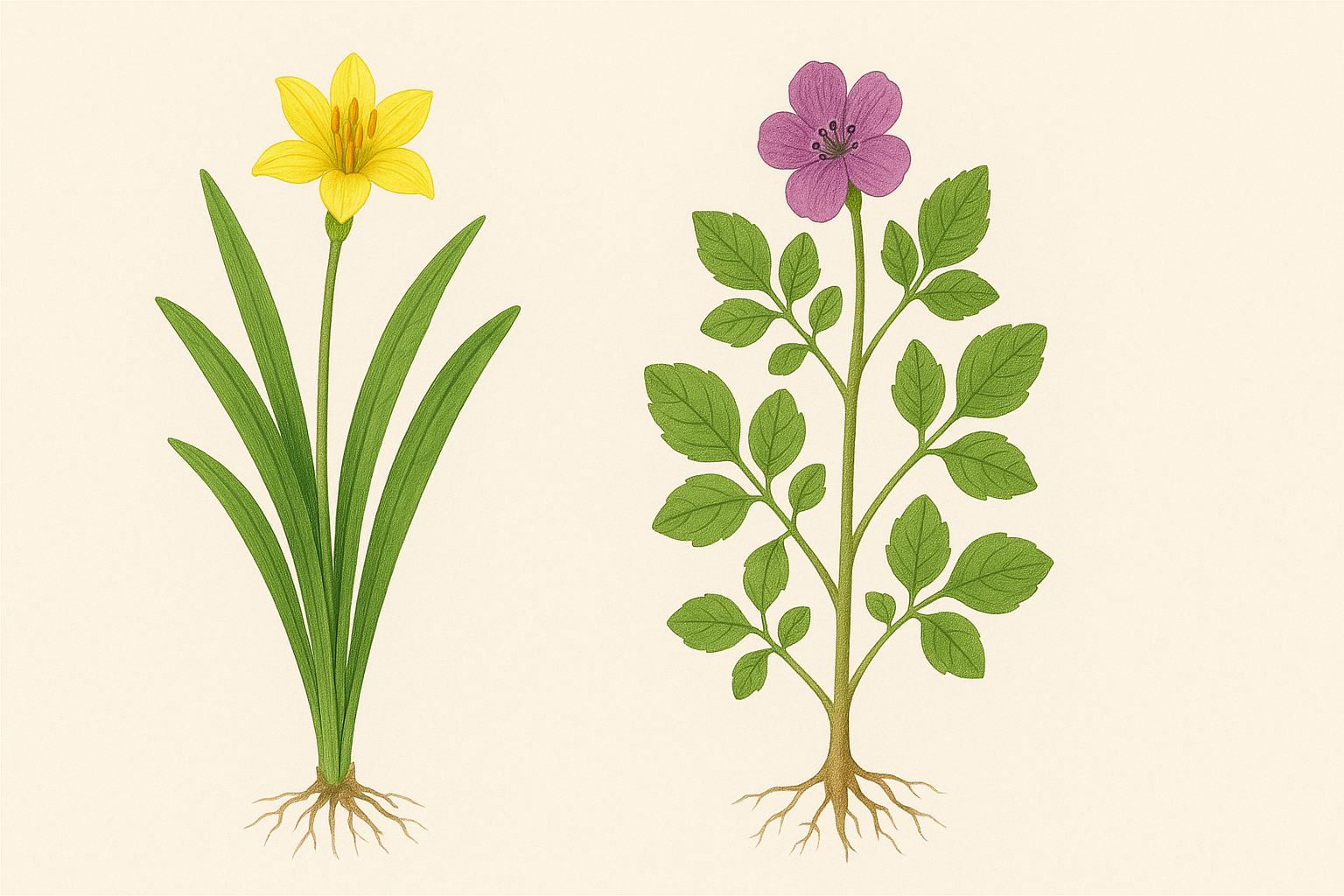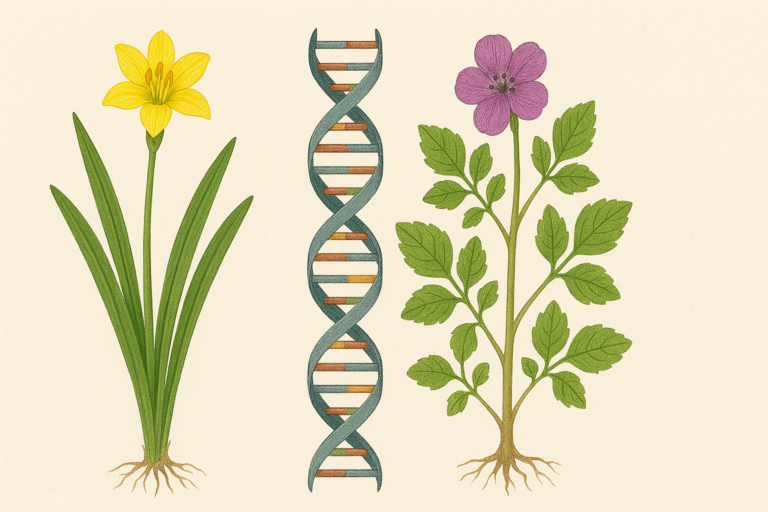
Understanding the difference between monocotyledonous (monocots) and dicotyledonous (dicots) plants is fundamental in botanical studies. This guide dives deep into the intricacies of these two major plant groups, offering unique insights into their taxonomy, biology, and cultivation.
1. Introduction
Monocots and dicots are two significant flowering plants classified under the Angiosperms division. The classification is primarily based on the number of cotyledons (seed leaves), with monocots having one and dicots having two.
2. Taxonomic Classification
According to taxonomic databases like Kew’s Plants of the World Online (POWO), monocots comprise about 60,000 species, including lilies, orchids, and grasses. Dicots, on the other hand, include about 175,000 species, like roses, peas, and oak trees.
3. Biological Differences
3.1 Seed Structure
The primary distinguishing characteristic between monocots and dicots is their seed structure. Monocots have one cotyledon, while dicots have two.
3.2 Leaf Venation
According to a study on PubMed, leaf venation patterns also differ; monocots generally have parallel veins, while dicots have a network of veins.
3.3 Floral Structure
Floral structures also differ. The parts of monocot flowers (like petals, sepals, stamens, or carpels) usually come in multiples of three, while dicots typically come in multiples of four or five.
4. Cultivation and Care
4.1 Monocots
Standard cultivation practices suggest most monocots prefer well-drained soil and full sun to partial shade. However, some monocots, like orchids, may require more specific care.
4.2 Dicots
Dicots include a wide variety of plants with diverse cultivation requirements. For instance, rose bushes (a dicot) prefer well-drained, loamy soil and full sun.
5. Conservation
According to the IUCN Red List, many monocot and dicot species face threats from habitat loss and climate change[6]. Conservation efforts are critical to ensure their survival.
6. Conclusion
Understanding the differences between monocots and dicots is crucial for botanists, gardeners, conservationists, and anyone interested in plants.
References
POWO. (n.d.). Monocotyledon. Kew Science. Retrieved from https://powo.science.kew.org/taxon/urn:lsid:ipni.org:names:30000046-2
POWO. (n.d.). Dicotyledon. Kew Science. Retrieved from https://powo.science.kew.org/taxon/urn:lsid:ipni.org:names:30000046-2
NCBI. (n.d.). Monocot vs. Dicot. NCBI. Retrieved from https://www.ncbi.nlm.nih.gov/
Boyce, C. K., & Leslie, A. B. (2012). The evolution of leaf venation and internal plumbing in land plants. American Journal of Botany, 99(8), 1435–1445. https://doi.org/10.3732/ajb.1200166
Endress, P. K. (2011). Evolutionary diversification of the flowers in angiosperms. American Journal of Botany, 98(3), 370–396. https://doi.org/10.3732/ajb.1000295
IUCN Red List. (n.d.). IUCN Red List of Threatened Species. Retrieved from https://www.iucnredlist.org/



